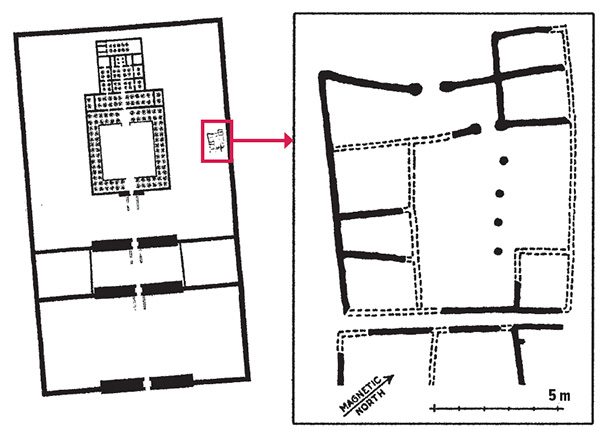Image Details

Courtesy of Manfred Bietak
FAMILIAR DWELLINGS. The plan of this worker’s house in western Thebes is similar to that of the four-room house characteristic of Israelite dwellings during the Iron Age. The four-room house is characterized by three parallel long rooms, which are separated by walls or rows of columns, and a fourth room at one end of the house that is perpendicular to the others. Sometimes these rooms are subdivided, and subsidiary rooms may be added, but the general plan remains the same. Most of these houses had a second story, and some scholars believe that the center room was unroofed and served as a courtyard.
Unlike the Israelite models that were usually constructed of stone, the Theban house—most likely from the 12th or 11th century B.C.E.—was made of wattle and daub. The similarities between this house in western Thebes and the four-room houses in Israel have caused some to speculate that the builders of the Theban house were either Proto-Israelites or a group closely related to the Israelites.
